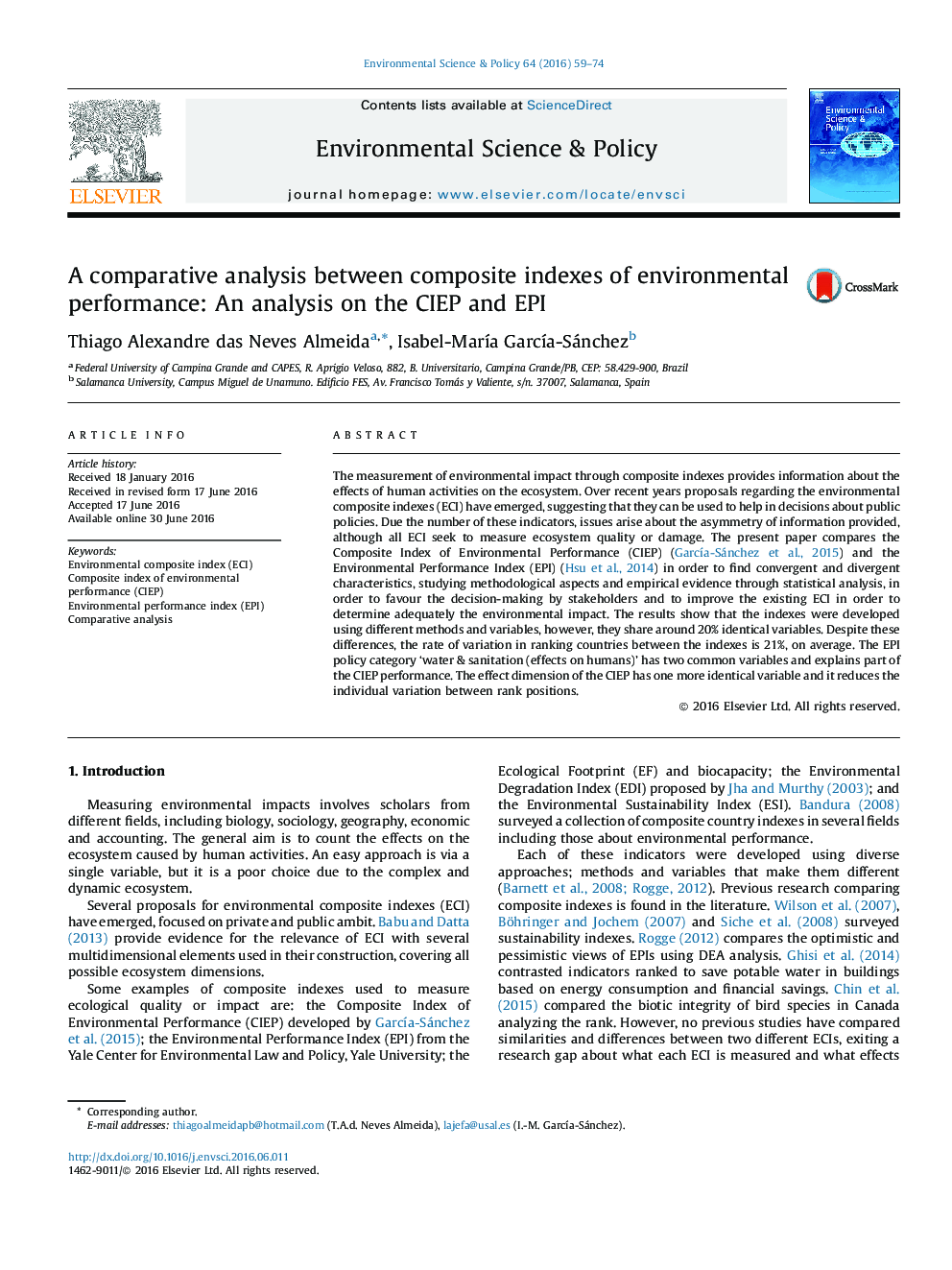| Article ID | Journal | Published Year | Pages | File Type |
|---|---|---|---|---|
| 1053419 | Environmental Science & Policy | 2016 | 16 Pages |
•The two indexes are developed using different methods and share approximately 20% of their variables.•The rate of variation in country ranking between the indexes is 21%, on average.•Water (effects on humans) reduces the differences between the CIEP and the EPI.
The measurement of environmental impact through composite indexes provides information about the effects of human activities on the ecosystem. Over recent years proposals regarding the environmental composite indexes (ECI) have emerged, suggesting that they can be used to help in decisions about public policies. Due the number of these indicators, issues arise about the asymmetry of information provided, although all ECI seek to measure ecosystem quality or damage. The present paper compares the Composite Index of Environmental Performance (CIEP) (García-Sánchez et al., 2015) and the Environmental Performance Index (EPI) (Hsu et al., 2014) in order to find convergent and divergent characteristics, studying methodological aspects and empirical evidence through statistical analysis, in order to favour the decision-making by stakeholders and to improve the existing ECI in order to determine adequately the environmental impact. The results show that the indexes were developed using different methods and variables, however, they share around 20% identical variables. Despite these differences, the rate of variation in ranking countries between the indexes is 21%, on average. The EPI policy category ‘water & sanitation (effects on humans)’ has two common variables and explains part of the CIEP performance. The effect dimension of the CIEP has one more identical variable and it reduces the individual variation between rank positions.
